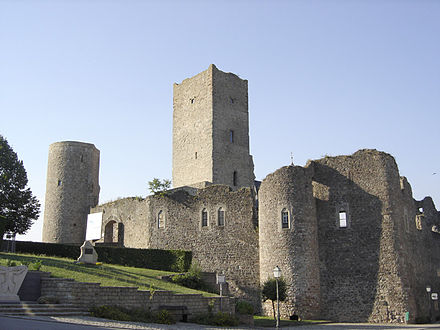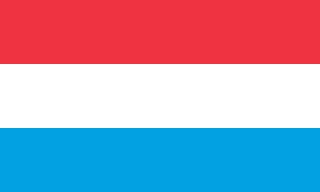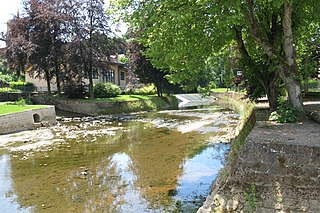
Hombourg-Haut is a commune located in the department of Moselle, region of Grand Est, in the cultural and historical region Lorraine, north-eastern France.
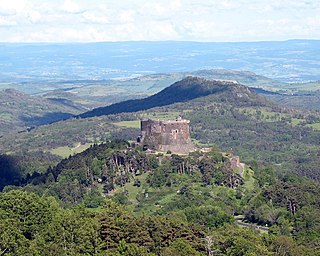
The Château de Murol is a castle overlooking the town of Murol in the département of Puy-de-Dôme in the Auvergne-Rhône-Alpes région, France.

The Château de Tonquédec is a castle in the commune of Tonquédec in the Côtes d'Armor département of France. It is one of the most visited monuments in the Côtes d'Armor.

There are numerous castles in the Hérault départment of France. Most are little more than ruins and many are barely discernible. Castles or their remains may be found at the following locations among others:

The Château de Schœneck is a ruined castle situated in the commune of Dambach, in the French département of Bas-Rhin.

Vianden Castle, located in Vianden in the north of Luxembourg, is one of the largest fortified castles west of the Rhine. With origins dating from the 10th century, the castle was built in the Romanesque style from the 11th to 14th centuries. Gothic transformations and trimmings were added at the end of this period. A Renaissance mansion was added in the 17th century but thereafter the castle was allowed to fall into ruins. It has, however, recently been fully restored and is open to visitors.

The architecture of Luxembourg probably extends back to the Treveri, a Celtic tribe who prospered in the 1st century BC. A few ruins remain from the Roman occupation but the most significant contributions over the centuries have been the country's castles and churches. Today there is a veritable architectural boom as Luxembourg's economic prosperity provides a basis for developments in the financial, EU and cultural sectors with a number of world-class buildings.

The Bock is a promontory in the north-eastern corner of Luxembourg City's old historical district. Offering a natural fortification, its rocky cliffs tower above the River Alzette which surrounds it on three sides. It was here that Count Siegfried built his Castle of Lucilinburhuc in 963, providing a basis for the development of the town which became Luxembourg. Over the centuries, the Bock and the surrounding defences were reinforced, attacked and rebuilt time and time again as the armies of the Burgundians, Habsburgs, Spaniards, Prussians and French vied for victory over one of Europe's most strategic strongholds, the Fortress of Luxembourg. Warring did not stop until the Treaty of London was signed in 1867, calling for the demolition of the fortifications. Ruins of the old castle and the vast underground system of passages and galleries known as the casemates continue to be a major tourist attraction.

Bourglinster Castle is located in the village of Bourglinster in central Luxembourg some 17 km (11 mi) to the east of Luxembourg City. Now housing a restaurant and facilities for business and cultural gatherings, the castle has a history stretching back to the 11th century.
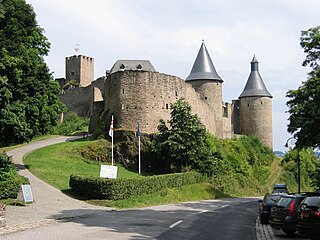
Bourscheid Castle is located near the village of Bourscheid in north-eastern Luxembourg. The medieval castle stands on a site with archeological evidence of structures dating back to Roman times. Standing majestically some 150 metres (490 ft) above the River Sûre, it is enclosed by a circular wall with 11 watchtowers.

Larochette Castle stands high above the town of Larochette in central Luxembourg. Dating from the 11th century, the castle was destroyed by fire at the end of the 16th century. Since its acquisition by the State of Luxembourg in 1979, some restoration work has been undertaken.

Hollenfels Castle, with a history dating back to the 11th century, is one of the castles located close to the River Eisch in the Valley of the Seven Castles in central Luxembourg. Today it is used as a centre for activities for young people, including a nearby youth hostel.

The New Castle of Ansembourg, in central Luxembourg is one of the castles belonging to the Valley of the Seven Castles. Located about one kilometre or just over half a mile below the Old Castle of Ansembourg, it was built by the industrialist Thomas Bidart in 1639.
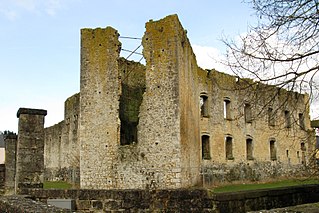
Koerich Castle is a ruin located in the village of Koerich in central Luxembourg. With a history dating back to the 12th century, it is one of the castles in the Valley of the Seven Castles.
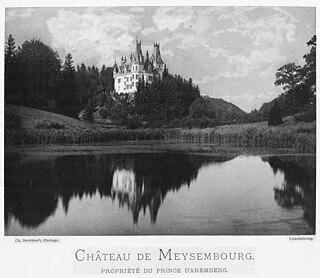
Meysembourg Castle is located some 2 km south-west of Larochette in central Luxembourg. While the site has a history dating back to the 12th century, today's castle was built in 1880 in Neo-Renaissance style and is privately owned.

Esch-sur-Sûre Castle, now a ruin, is located on a spur in the small town of Esch-sur-Sûre in the north-west of Luxembourg. It is naturally protected by a sharp meander in the River Sûre which surrounds the town and the castle on three sides.

Brandenbourg Castle, now a ruin, is located on a promontory some 70 metres above the village of Brandenbourg in north-eastern Luxembourg. It has a history going back to the 9th and 10th centuries when there was a wooden fort on the site. The 13th century keep, now 11.9 metres high, used to have four floors, only three of which remain. In 1668, the French attacked the castle which subsequently fell increasingly into ruin. It is now owned by the Luxembourg State.

Pettingen Castle is located in the village of Pettingen some 4 km north of Mersch in central Luxembourg. It is one of the best preserved fortified castles in the country.

Beaufort Castle dating from the 11th century consists of the ruins of the medieval fortress and an adjacent Renaissance château. It is located in Beaufort in eastern Luxembourg.
